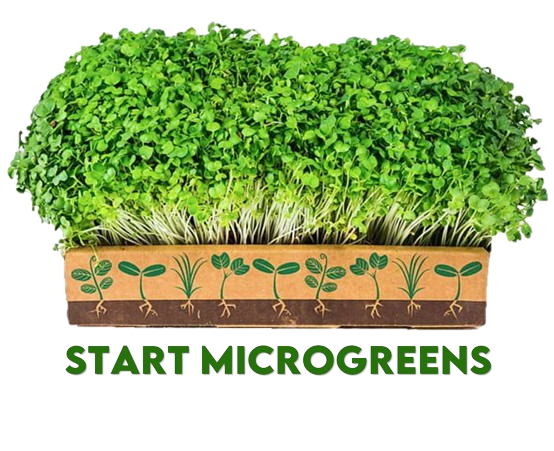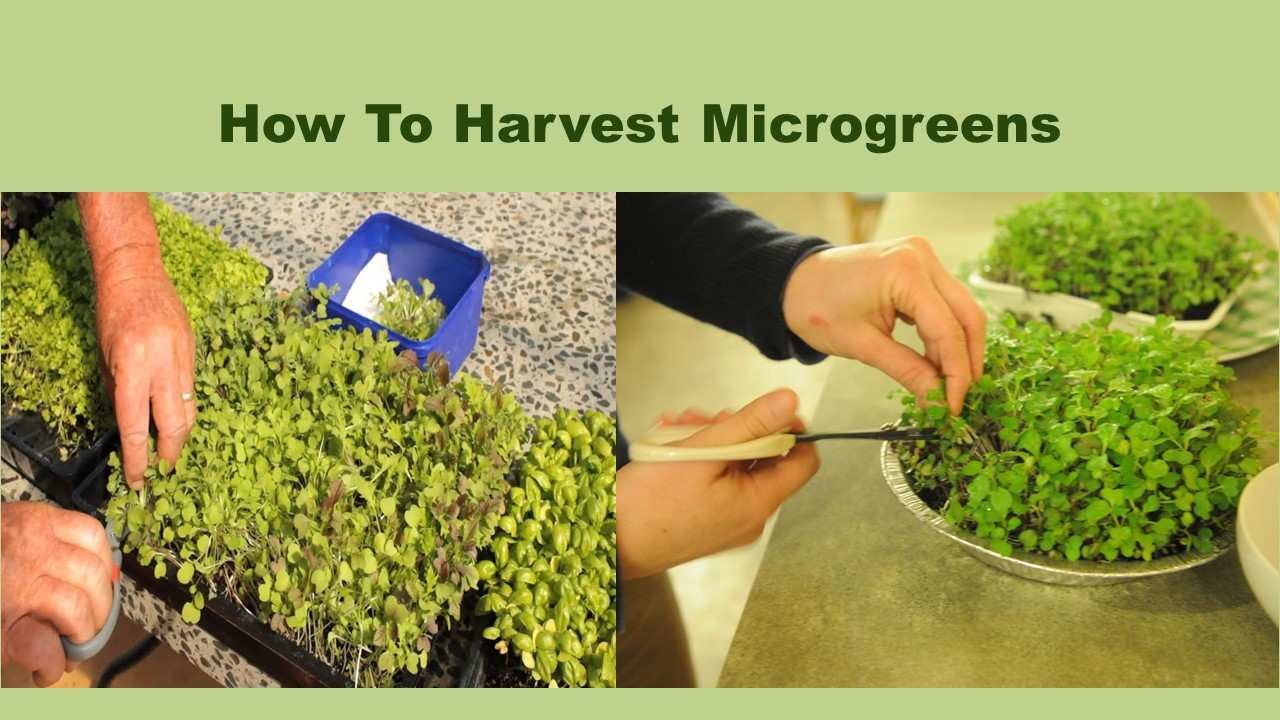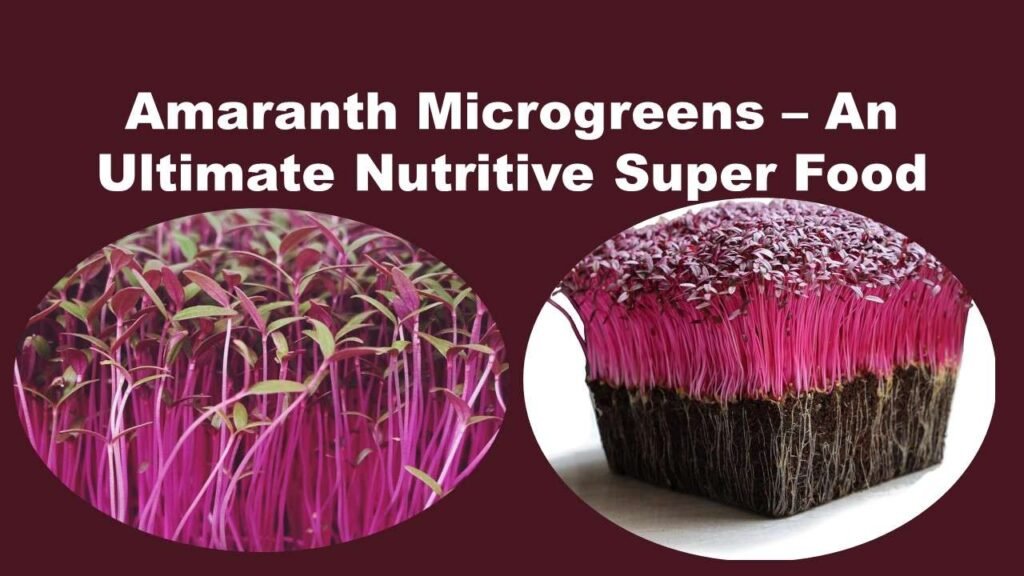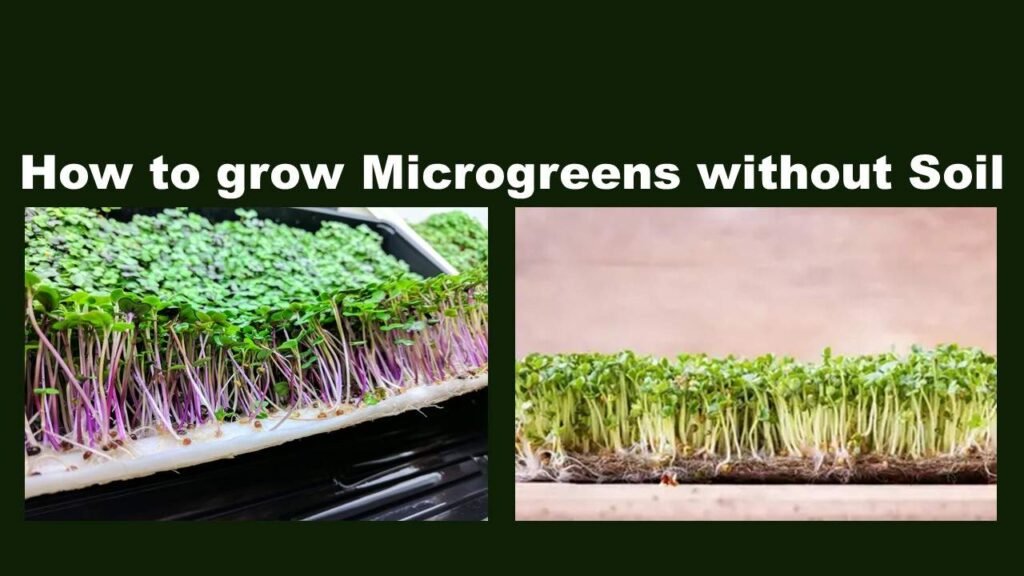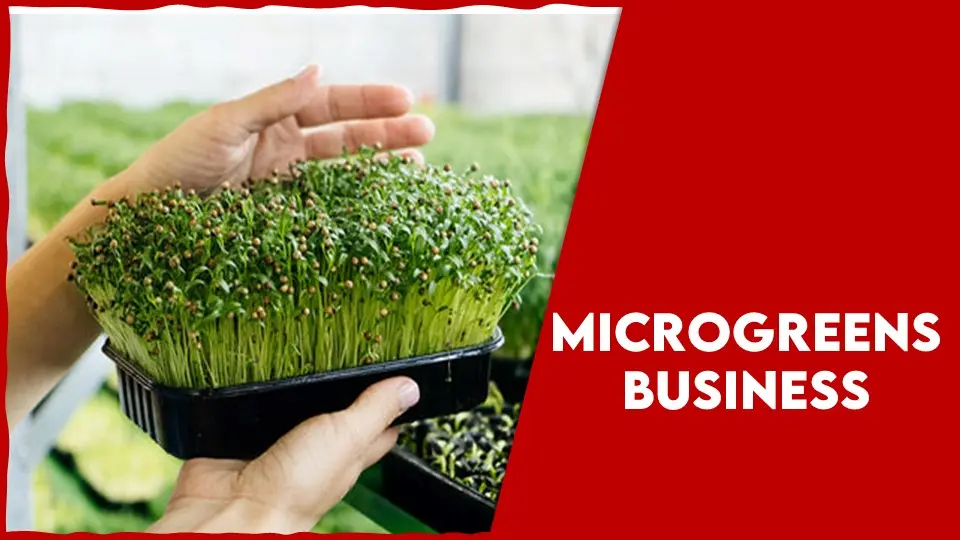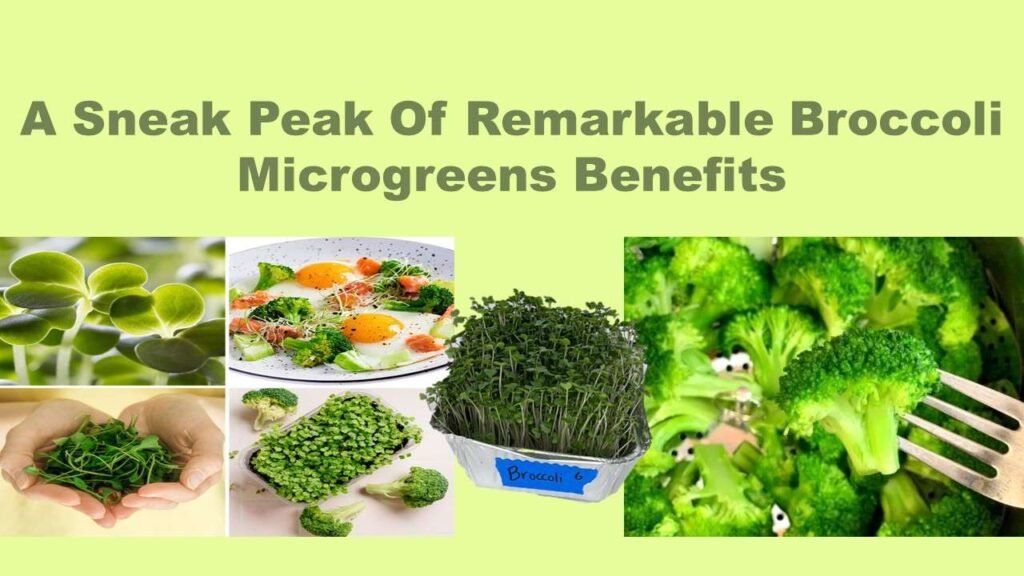How To Harvest Microgreens – The Best Guide That Guides You!
Harvesting microgreens is a delicate process. It’s not just microgreens, any other harvesting process is a sensitive yet rewarding process that allows you to reap the benefits of all the hard work put into it. How to harvest microgreens with proper care and attention? No worries, this article will help you with this. Harvesting is probably the freshest and most nutritious process that gives you great satisfaction right from your own home. These miniature versions of leafy vegetables and herbs are harvested at an early stage of growth, typically when they are just a few inches tall and their first true leaves have emerged.
In the entire harvesting process, the time of harvest is very crucial, and make sure that microgreens are harvested when the flavor has been developed fully without any compromise on the nutrient potency. Harvesting goes right when the right technique is followed and a perfect tool is used. Proper and safe harvesting is required to enhance the taste and appeal of your whole journey with the greens.
Harvesting any of the greens is not just about reaping the rewards of your complete gardening efforts which you thought you were not capable of at least at one point in time, but it is also about engaging in a process that connects you more intimately with the food you consume and the nature you live in. It is a practice that helps you witness the vibrancy of colors, the delicacy in the texture, and the freshness in the flavors.
With each snip of the scissors or slice of the knife, you’re not just gathering ingredients for your meals but also indulging in a sensory experience that celebrates the natural cycle of growth and nourishment. No matter if you are a beginner to this garden journey or a novice with enthusiasm for gardening, harvesting microgreens will offer you a great sense of satisfaction and accomplishment that is not found anywhere else. This article talks about how to harvest microgreens.

What Is the Harvesting Process?
Harvesting microgreens involves collecting the young, tender shoots of edible plants when they have reached a certain stage of growth. Microgreens are typically harvested very early in the growth cycle, often when they are only a few inches tall and have developed their first true leaves. The process involves cutting the microgreens just above the soil level using clean scissors or a sharp knife.
One needs to handle them gently to avoid damage to the leaves as these are delicate. After harvesting, microgreens can be rinsed with cold water to remove any soil or debris, although this step is optional. Microgreens are best and healthy if consumed fresh but can also be stored in the refrigerator for a few days if needed. Some varieties of microgreens may regrow after the initial harvest, allowing for multiple cuttings.
How To Harvest Microgreens – What Is The Process Of Harvesting?
Harvesting microgreens involves collecting the young, tender shoots of edible plants when they have reached a certain stage of growth. Microgreens are typically harvested very early in the growth cycle, often when they are only a few inches tall and have developed their first true leaves. The process involves cutting the microgreens just above the soil level using clean scissors or a sharp knife.
It is mandatory and crucial to handle them gently to avoid any damage that might arise while handling the delicate leaves. After harvesting, microgreens can be rinsed with cold water to remove any soil or debris, although this step is optional. Microgreens are best and nutritious when consumed fresh, but if they can also be stored in the refrigerator for a few days.
Some varieties of microgreens may regrow after the initial harvest, allowing for multiple cuttings. In short, this harvesting process too process of harvesting microgreens is sensitive and delicate because they are too tiny to handle and require greater attention to be paid to ensure none of their properties like texture and flavor are lost.
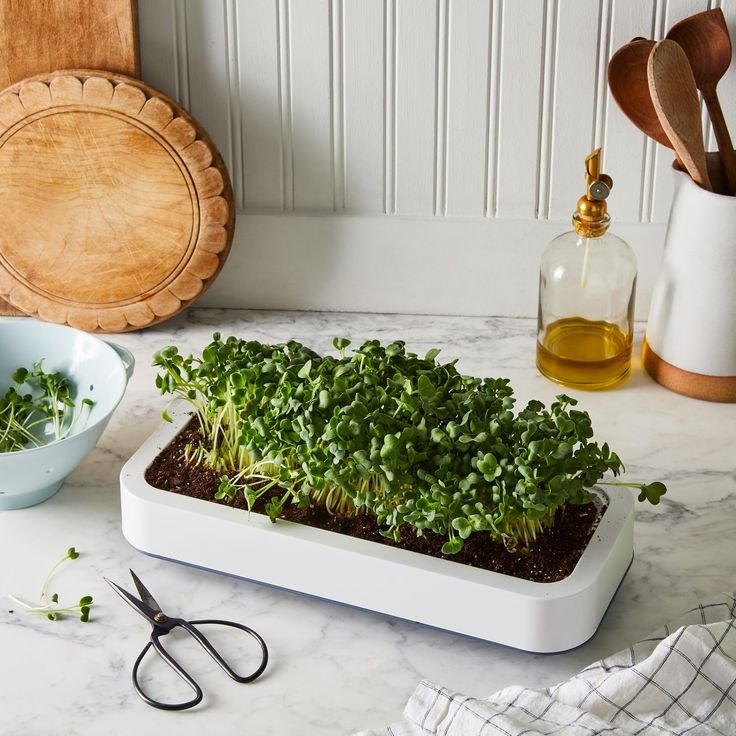
When Do Microgreens Come To Harvest
- Before knowing how to harvest microgreens, it is necessary to know when they come to harvest. Microgreens are typically harvested at a very early stage of growth, usually between 7 to 21 days after germination, depending on the variety.
- Harvesting microgreens at this young stage ensures that they are packed with nutrients and have a delicate texture and fresh flavor. The timing of harvest varies depending on the specific type of microgreen being grown. Some varieties, such as radish or broccoli, may be ready for harvest in as little as 7 to 10 days after germination, while others, like sunflower or pea shoots, may take closer to 14 to 21 days to reach optimal maturity.
- When the harvesting time has arrived, one needs to carefully monitor its growth closely to know the exact and ideal time of the harvest. Look for signs like true leaf emergence, vibrancy in the color, and uniformity in the growth. Growers typically use sharp scissors or shears to cut the microgreens just above the soil line, ensuring a clean cut without damaging the delicate stems.
- It’s essential to harvest microgreens promptly once they reach the desired stage of growth to prevent over-maturity, which can result in a tougher texture and less desirable flavor. Apart from this, harvesting the produce at the right time will make sure that you are receiving the right quantity in the right quality you need.
Materials Needed To Harvest Microgreens
How to harvest microgreens would be completed after knowing the materials needed for harvesting. During the harvesting of microgreens, several key pieces of equipment are commonly used to ensure efficiency and maintain the quality of the harvested greens:
Scissors or Knife
A sharp pair of scissors or a clean knife is essential for making precise cuts when harvesting microgreens. This allows you to cleanly snip the greens just above the soil level without causing damage to the remaining plants.
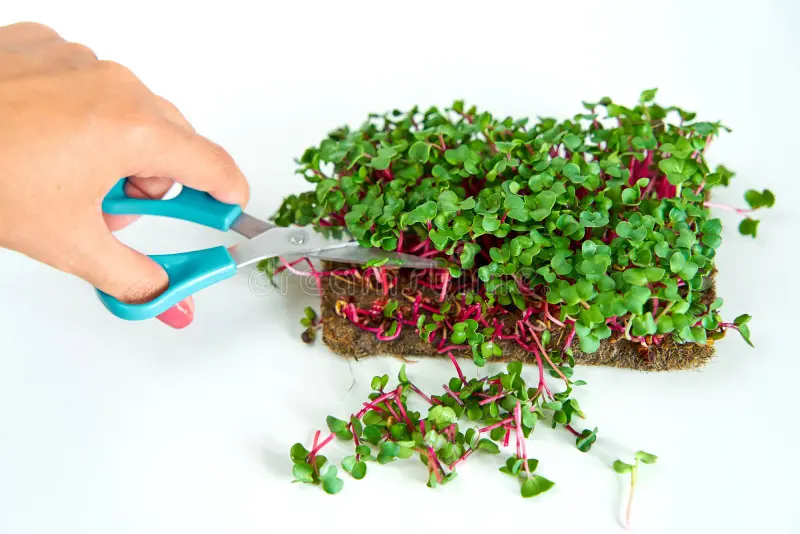
Sanitizing Solution
It’s important to use a sanitizing solution or alcohol wipe to clean your harvesting tools before each use. This will prevent all the chances of occurrence of contamination and also prevent the spread of potential contaminants.
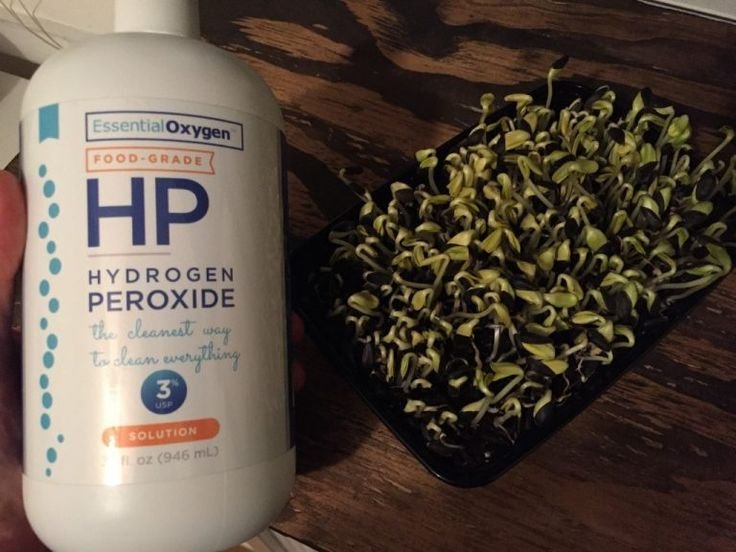
Watering Can or Spray Bottle
Before harvesting, it’s beneficial to hydrate the microgreens slightly by gently watering them. A watering can with a fine spout or a spray bottle can be used to evenly moisten the greens without oversaturating them.
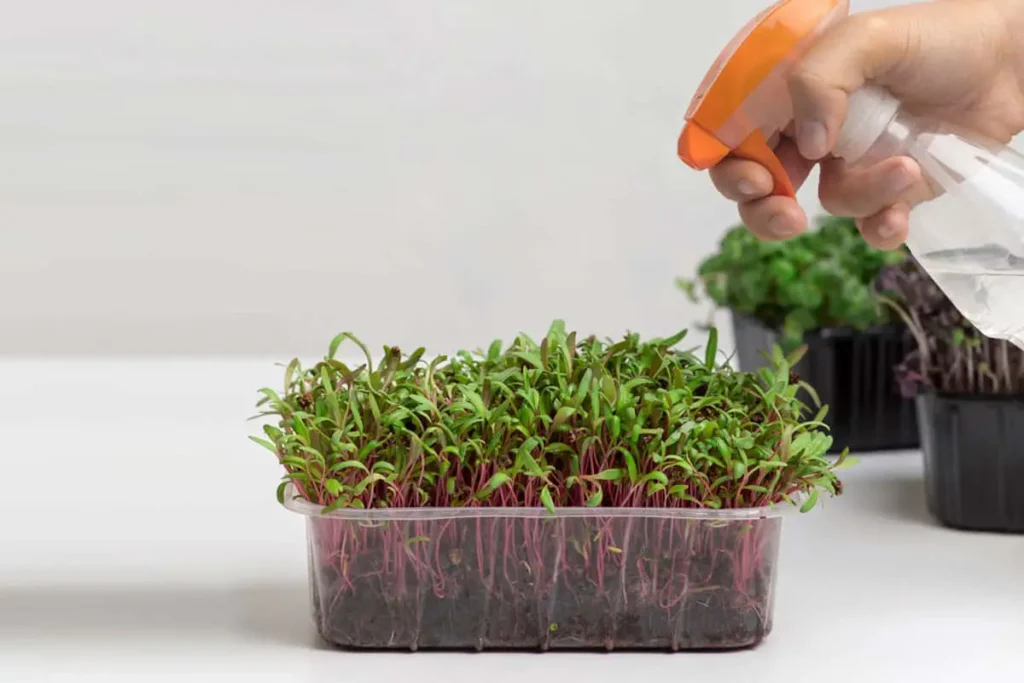
Harvesting Trays or Surfaces
Having a clean and sanitized surface to place the harvested microgreens is important to maintain their freshness and cleanliness. Harvesting trays or clean cutting boards can serve as suitable surfaces for collecting the freshly cut greens.
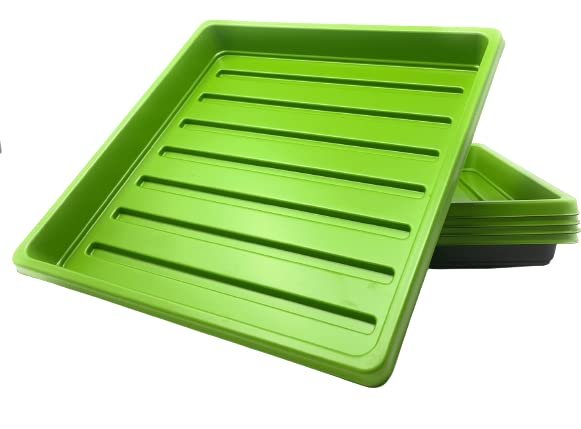
Storage Containers
Once harvested, microgreens need to be stored properly to maintain their freshness and quality. Breathable containers lined with paper towels or perforated plastic bags are commonly used for storing harvested microgreens in the refrigerator.
By using the proper and essential tools and equipment without any negligence, you can effectively harvest microgreens with more attention and care.
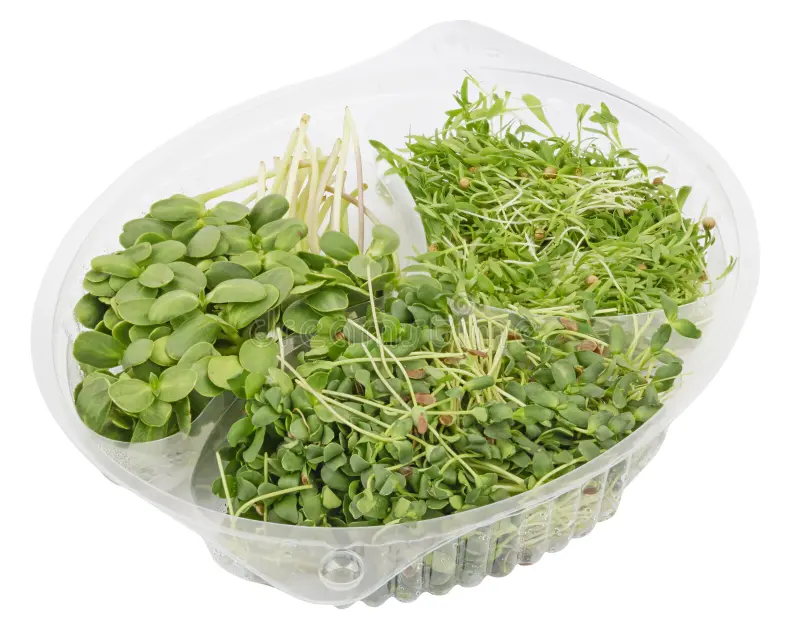
Points To Be Considered While Harvesting
Timing
Microgreens are typically ready to harvest 7-21 days after sowing, depending on the variety. They are harvested when the first true leaves (the second set of leaves) have fully developed.
Equipment
You’ll need clean scissors or a sharp knife for harvesting. Ensure they are sanitized to prevent contamination.
Preparation
Before harvesting, gently water the microgreens to hydrate them slightly. This will make the harvesting process easier and effortless
Harvesting
To harvest, hold the stem of the microgreen near the base and use your scissors or knife to cut just above the soil level. Make clean, swift cuts to avoid damaging the remaining plants.
Harvesting Tips
- Harvesting is usually done when the microgreens are around 1-3 inches tall, depending on personal preference and variety. The taste and flavor of the microgreens might differ and depend on the stage. To achieve the perfect flavor, one needs to experiment with it by harvesting it at various stages.
- Avoid harvesting when the microgreens are wet to prevent excess moisture on the harvested greens, which can lead to spoilage.
- Harvest only the amount you need, leaving the rest to continue growing. This allows for multiple harvests from the same tray or container.
- If you’re growing multiple varieties of microgreens in the same container, harvest them separately to avoid mixing flavors and textures.
Storage
After harvesting, gently rinse the microgreens in cold water and pat them dry with paper towels or a clean kitchen towel. Store them in an aerated container or opt for a plastic bag with perforations in the refrigerator. Properly stored, microgreens can stay fresh for several days.
Problems Encountered Wih Harvesting
Uneven Growth
Microgreens may not all grow at the same rate, leading to some being ready for harvest while others are not. This can complicate harvesting as you’ll need to selectively pick mature ones without damaging the younger ones.
Overgrown Microgreens
If microgreens are left too long before harvesting, they can become overgrown, resulting in a tougher texture and a less desirable flavor. Overgrown microgreens may also develop longer stems, making them less visually appealing.
Damage During Harvest
Microgreens are delicate and can easily be damaged during harvesting if not handled carefully. It should not be handled roughly and requires smooth handling. Any bruises or tears can lead to a quality reduction.
Contamination
Contamination can occur during harvesting if proper hygiene practices are not followed. Starting from the handling of tools, the pathogens might be introduced so make sure to avoid this. To prevent cross-contamination, every tool needs to be sanitized.
Labor Intensive
Harvesting microgreens can be labor-intensive, especially on a large scale. Careful attention has to be paid. There might be repetitive processes such as sorting and packing which require a good number of labor.
Harvesting Too Early or Too Late
Harvesting microgreens at the correct stage of growth is crucial for optimal flavor, texture, and nutritional value. Harvesting too early can result in underdeveloped greens while harvesting too late can lead to tough and bitter leaves.
Conclusion
Harvesting should be done with utmost care to optimize its flavor and quality.. The timing of the harvest is crucial, typically occurring when the microgreens reach a height of 1-3 inches, which usually takes around 7-21 days after sowing, depending on the specific variety being grown. The early growth stage will make sure that the microgreens are rich in flavor and tender. When it comes time to harvest, using clean scissors or a sharp knife, the microgreens should be cut just above the soil level.
It’s crucial to complete the cutting process in one session to ensure uniformity in growth for subsequent batches. They are too delicate to be handled and proper handling is needed. Proper care and attention have to be given to avoid any damage to the slender stems and tender leaves. When I say, these are too delicate to be handled, it means care and attention have to be paid during harvesting so that the leaves don’t get damaged during handling and preserve their quality.
It is a must and should clean the trays thoroughly to avoid the concentration of pathogen load that will help to continue the process of cultivation further. The question of how to harvest microgreens has come to an end. Go, harvest them if you have already grown them. Happy harvesting !
